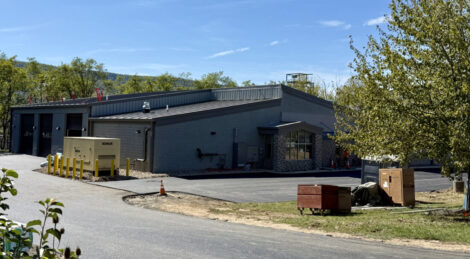Williamsport Department of Public Works director talks budget
They plow the snow, mow the parks and public properties, replace street lights and repair electrical components, work with contractors on street resurfacing, control the floods and provide emergency barrier protection for special events.
The plethora of duties for the City of Williamsport Department of Public Works often require long hours, overtime, labor and skills.
Each year, the department is among those that go before the City Council as the departmental budget is presented. This year was no different, as Scott Livermore, director, noted a 0.9% increase in the Office of Directors part of the department and 2% increase for at-will employees.
City Hall continues to drain funds
“Operating cost for City Hall is up $13,613,” he said.
The building remains unopened to the public since 2021, but it must be maintained and heated over the winter months. The mayor included the sale of the building at 245 W. Fourth St. in the budget proposal for 2026.
Other savings have been sought.
Councilman Vince Pulizzi observed how it looked as though health insurance had decreased.
It is because of one of the changes for an individual in the department.
A reduction of $24,000 in office rent was listed due to a property deed transfer.
“We did put some of that into facility maintenance,” said Jamie Livermore, Scott’s wife and the city finance director.
The department was down 6.7% for its street lights and traffic control.
One of the big contributors to that was cutting down street resurfacing and brick street to (zero), Livermore said. “That is a savings of $200,000,” he said.
Some catch up funding has been provided through Community Development Block Grants for street resurfacing. The city to be at or close to the $1 million mark for street resurfacing, he said.
Bridge budget
Not a bridge as one would cross driving or walking, but from a financial aspect.
Council has been discussing with Public Financial Management Group (PFM), the Philadelphia-based consultant that is assisting the city with its Strategic Management Plan, a bridge budget that would in place for two years until the city is ability to be on stronger financial footing through implementation of, perhaps, a Home Rule charter form of government.
“How are we bridging the second year of paving?” asked Councilwoman Liz Miele.
“I’ve got to look into that,” Livermore said, adding, “there’s a couple things that we’ve cut this year.” “I took out some money from Act 13 (the natural gas impact fee). “I have $100,000 out of that,” he said. “I have $350,000 out of my liquid fuels and we are around the $600,000 mark out of Community Development Block Grant funding.”
Next year, the city will take a hit, but he noted he is getting extra funding through the finance department’s efforts to bridge the gap to where the city can get back to where it needs to be.
“Those are the reasons for the big cuts,” he said.
Flood control
This part of the department budget was projected to be lower by 0.48 %.
It consists of two individuals who take care of all things related to the flood control and levee.
Councilman Eric Beiter asked if the city was getting reimbursement from Loyalsock Township for maintaining a portion of Millers Run section. That is a 10-year agreement with the township that it reimburses the city. Livermore said he planned each year to add a possible increase in the reimbursement fee due to fuel costs.
Parks
The department budget for parks was up 0.82 %.
There are five people in that department who take care of the parks including mowing and trimming.
Miele asked Livermore if the department could withstand the delay in the capital projects budget expenses in 2026.
“I know how your department is heavily equipment-dependent,” she said.
“Nope,” Livermore said, adding he thought it would not affect the department.
Barricades and bollards
Initially, several months ago, Councilman Jon Mackey spearheaded efforts to get barricades downtown for special events such as First Fridays.
“You’ve clearly won the contest of cutting the most out of the budget,” Mackey said. He added it would make sense for the city to add some money back in that part of the department budget, especially because of the time that it takes to set up these barricades.
“This is something that we can’t pick and choose,” Mackey said. “If there are events taking place on city property – we need to protect them.”
Mackey looked at the department’s overtime budget of $60,000 and asked if it was bumped up to $75,000 could that $15,000 be used for the cost of placing out barricades at special events?
“Are you allowed to quantify overtime like that?” Mackey asked.
Jamie Livermore said the city does not usually do that.
Scott Livermore added that he was never certain what might happen between now and Christmas, for example, such as a blizzard that requires additional manhours then the set eight hour day.
“It is our responsibility to protect the people who are attending that events,” Mackey said.
That is being done, to the best of the department’s ability, with the water-filled plastic barriers.
Livermore said he would get together with Sean Walker, city recreation coordinator, to calculate what special events were upcoming along with the First Fridays to see if the city needed to add money into this matter.
“It’s not a valid excuse not to do this stuff, if we need to add money back into your budget.
that’s what we need,” Mackey said.
Councilwoman Liz Miele noted how Mackey works in the emergency management realm and she asked if he was aware of communities that are able to put out street barrier protective measures.
Currently, the city has applied for a grant to pay for much of the cost associated with automatic bollards, which could be a $350,000 funding source toward this security investment.




